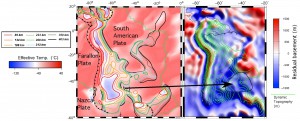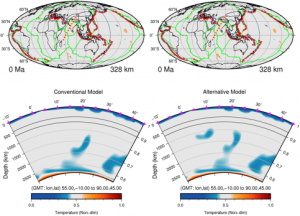 A substantial portion of Earth’s topography is known to be caused by the viscous coupling of mantle flow to the lithosphere but the relative contributions of shallow asthenospheric flow versus deeper flow remains controversial. The Argentine Basin, located offshore of the Atlantic margin of southern South America, is one of the most anomalously deep ocean regions as it is significantly deeper than its age would suggest. … Read more…
A substantial portion of Earth’s topography is known to be caused by the viscous coupling of mantle flow to the lithosphere but the relative contributions of shallow asthenospheric flow versus deeper flow remains controversial. The Argentine Basin, located offshore of the Atlantic margin of southern South America, is one of the most anomalously deep ocean regions as it is significantly deeper than its age would suggest. … Read more…
Geochemistry, Geophysics, Geosystems – Lower mantle structure from paleogeographically constrained dynamic Earth models
Bower, D. J., Gurnis, M., & Seton, M. (2013). Lower mantle structure from paleogeographically constrained dynamic Earth models. Geochemistry, Geophysics, Geosystems, 14(1), 44-63. doi:10.1029/2012GC004267. Download the paper – pdf

